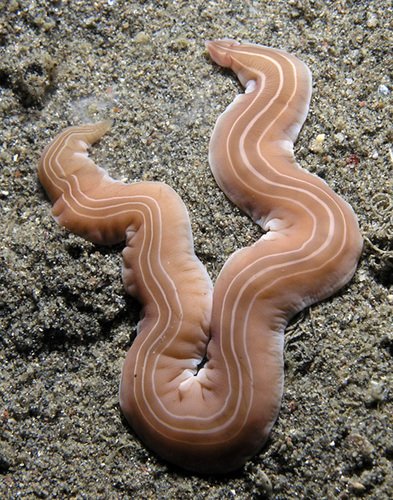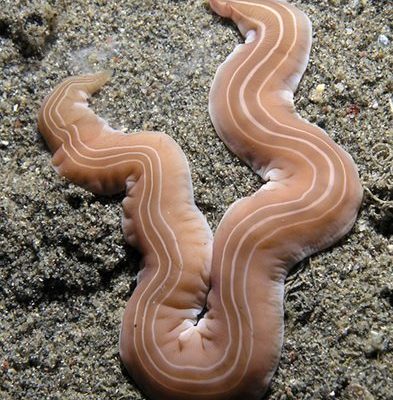
Let’s dig a little deeper into the world of ribbon worms. Imagine you’re embarking on a treasure hunt, searching for clues hidden in the sand and mud. As you uncover these ribbon-like creatures, you’ll discover how they interact with other organisms and the environment. In this article, we’ll explore the different ways ribbon worms contribute to biodiversity in estuaries, shedding light on their importance in maintaining a healthy ecosystem.
What Are Ribbon Worms?
Ribbon worms, belonging to the phylum Nemertea, are long, soft-bodied creatures that can vary in size from just a few centimeters to several meters in length. When you first see one, you might think it resembles a colorful piece of ribbon drifting through the water. With elongated bodies and a smooth texture, they’re quite unique!
These worms typically inhabit shallow coastal areas such as estuaries, where saltwater meets freshwater. They can be found wriggling through mud and sand, often hiding in crevices. Ribbon worms are predators, using a specialized structure called a proboscis to capture prey like small fish, crustaceans, and other marine invertebrates. This hunting technique not only provides them with food but also plays a crucial role in controlling the population of other species.
Ribbon Worms as Ecosystem Engineers
You might be wondering what it means to be an “ecosystem engineer.” Well, ribbon worms help shape their environment in several ways. As they burrow through the substrate, they mix sediments and aerate the soil, which benefits other organisms. This activity creates a healthier habitat for benthic (bottom-dwelling) species.
By digging and foraging, ribbon worms create pathways in the mud and sand. These tunnels allow water to circulate more effectively, preventing harmful stagnation and enhancing nutrient exchange. Just like a gardener cultivating the soil, ribbon worms play a role in creating a flourishing environment for many other species, promoting overall biodiversity.
The Role of Ribbon Worms in Food Webs
Think of ribbon worms as essential players in the food web of estuaries. They’re not just predators; they’re also prey. Birds, fish, and other marine animals depend on ribbon worms for nourishment. When these worms thrive, they provide a food source that supports a variety of wildlife.
In turn, ribbon worms feed on smaller invertebrates, which helps maintain a balanced ecosystem. Too many small creatures mean competition for resources, while too few could lead to unchecked populations. By keeping these dynamics in check, ribbon worms contribute to a stable food web that benefits the entire estuary.
Importance in Nutrient Cycling
Nutrient cycling is another area where ribbon worms shine. As they consume organic matter and prey, they break down nutrients in their bodies. When they excrete waste, these nutrients return to the sediment, enriching the environment. It’s like they’re nature’s recyclers, turning waste into a resource that other organisms can use.
This recycling process is crucial for the health of estuarine ecosystems. Nutrient-rich sediments encourage the growth of algae and seagrasses, which in turn support a variety of marine life. In this way, ribbon worms play an indirect but vital role in sustaining the health and productivity of coastal habitats.
Impact of Human Activity on Ribbon Worms
Unfortunately, ribbon worms face threats from human activity. Pollution, habitat destruction, and climate change can all impact their populations and, by extension, the overall biodiversity of estuaries. For instance, increased pollution can lead to a decrease in prey availability, affecting the ability of ribbon worms to thrive.
Habitat destruction, such as coastal development or dredging, can disrupt their environments, making it harder for ribbon worms to find shelter and food. As estuaries are often seen as dumping grounds for waste, the delicate balance of life can be thrown off. This highlights the need for conservation efforts to protect both ribbon worms and the ecosystems they support.
Conservation Efforts and Future Prospects
Luckily, there are organizations and initiatives aimed at preserving estuarine habitats and the creatures that reside within them. By promoting sustainable practices and reducing pollution, we can help maintain the delicate balance of these ecosystems. You might think, “What can I do?” Well, even small changes, like reducing plastic use and supporting local conservation projects, can make a difference.
Education also plays a key role in conservation. The more we understand the importance of ribbon worms and other estuarine species, the more motivated we become to protect their habitats. Awareness campaigns and community projects can help foster a sense of responsibility and stewardship toward these unique ecosystems.
In summary, ribbon worms are much more than just squiggly creatures found in estuaries. They contribute to biodiversity by acting as ecosystem engineers, maintaining food webs, and playing a key role in nutrient cycling. Sadly, they face various threats from human activity, making conservation efforts essential.
So, the next time you visit an estuary, take a moment to appreciate these unsung heroes. Ribbon worms might be small in size, but their impact on biodiversity is anything but trivial. By supporting conservation efforts, we can ensure these fascinating creatures continue to thrive and contribute to the health of our coastal ecosystems. Remember, every little bit helps, and together, we can make a difference!

